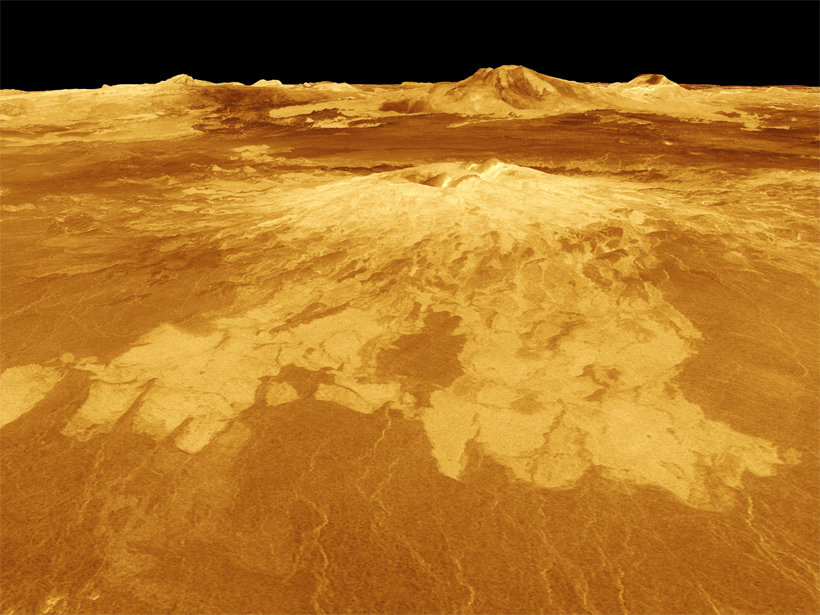In September 1960, we planted our flag. I don’t mean Neil Armstrong doing his thing 9 years later on the Moon, of course (see our July issue for that celebration). This is when AGU’s then president Lloyd V. Berkner invited member H. E. Newell to stake a claim here in the pages of Eos on the field of planetary science, as the organization with “the strongest interest in this matter.”
Planetary science, then defined as the burgeoning study of the solar system, was the ultimate in convergence science, incorporating so much more than existing astronomy and rocket associations were able to represent. “Once the property of the astronomer, and not too highly valued a property at that, the planets now are brought within the purview of the geophysicist,” Newell wrote. “It is hoped that the geophysicists and astronomers will unite now to give them the attention that they deserve scientifically.”
Newell was announcing in Eos the launch of the Planning Committee on Planetary Science, which Berkner had appointed him to lead. Two years later—only 2 months after John F. Kennedy declared that we choose to go to the Moon—and with overwhelming support from its membership, AGU announced its new Planetary Sciences section.
This month, as we continue our yearlong celebration of AGU’s Centennial, we look to our neighbors in this small patch of our universe. Indeed, these days we look even farther beyond—the study of exoplanets was still only theory to our pioneering section leaders.
Let’s begin by urging new exploration of a world once thought dead. In our cover story on Venus, scientists have taken a contemporary look at the data sent back from the Magellan spacecraft in the 1990s and are revising their theories on the state of the planet’s geology. Once thought to have succumbed to catastrophic resurfacing, new maps reveal Venus is resurfacing in a steady state, in pieces at a time. Enough questions have been raised by looking at old data with new technology that scientists are extremely eager to find out what they may discover by sending a new mission to go collect data with today’s capabilities. And Venus-philes aren’t the only ones: Now that thousands of exoplanets have been discovered, some of them look suspiciously like our inner neighbor. Understanding Venus can help us understand so many parts of the universe.
While volcanologists have their eyes on Venus, oceanographers have their sights on Europa. A new study reveals that the ocean under the surface of Europa’s moon very likely contains sodium chloride—good ol’ Terran table salt and the same type of salt found in our own oceans. It’s an exciting finding, especially for anyone hoping to find life on a world other than our own.
This issue is packed with several more recent studies about metals on the Moon, the first detected marsquake, and the fine line between giant planets and brown dwarfs. We’re also taking some liberties in the definition of planetary sciences by reporting on some exceptional research on the makeup of our own, sometimes very strange, planet.
My favorite fact in this issue is from this story: There are continent-sized “blobs” in Earth’s mantle that if they were sitting on the planet’s surface, would reach so high the International Space Station would have to navigate around them. The study of the Earth blobs began in the 1970s, but with multiple published papers concluding contradictory findings, the research has only raised more questions and deepened a fascinating geoscience mystery.
No one at AGU was sleeping on the opportunity for Earth and space scientists to participate in the discoveries offered by our first forays off world, H. E. Newell the least of all: “The new frontier of science in our time is space research. All scientific disciplines will be called upon in its exploration,” he wrote in Eos. We call you all once more, as we enter the next century of collaboration together through AGU.
—Heather Goss (@heathermg), Editor in Chief
Citation:
Goss, H. (2019), A new approach to new worlds, Eos, 100, https://doi.org/10.1029/2019EO131471. Published on 30 August 2019.
Text © 2019. AGU. CC BY-NC-ND 3.0
Except where otherwise noted, images are subject to copyright. Any reuse without express permission from the copyright owner is prohibited.
Text © 2019. AGU. CC BY-NC-ND 3.0
Except where otherwise noted, images are subject to copyright. Any reuse without express permission from the copyright owner is prohibited.

